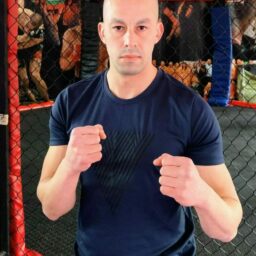take, and naturally, many of them are conflicting. Many offer theoretical arguments, but we at the Sweet Science of Fighting prefer the practical side. So, which is the best in practical terms?
MMA is the best self-defense system because it teaches all aspects of unarmed combat. While self-defense systems such as Krav Maga and others approach the subject from a more realistic and non-sports perspective, MMA fighters and even hobbyists constantly hone and test their skills against opponents and training partners, which is not the case with self-defense systems.
But there are a lot of other martial arts with something to offer, and I will go through some of the most popular ones and give you my opinion on where they succeed and where they might fail in a self-defense scenario.
MMA
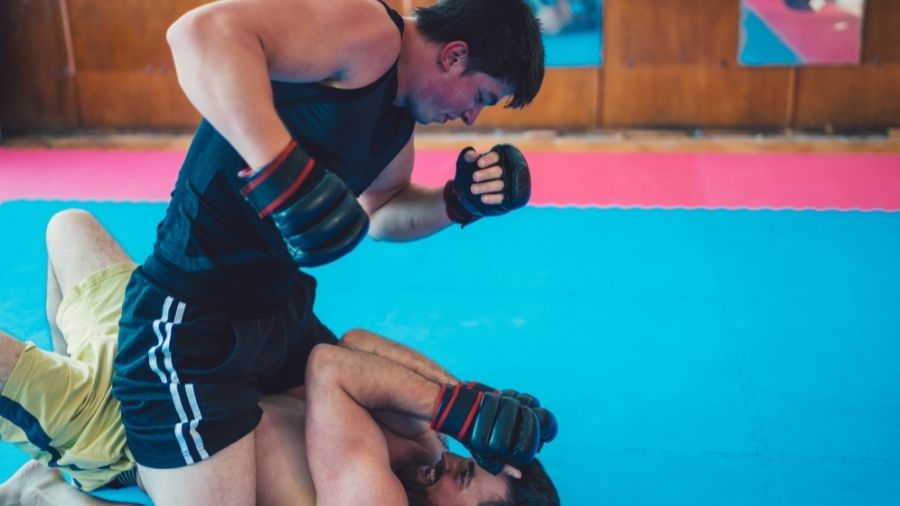
I will start with what I believe is the best style to learn for self-defense: mixed martial arts. MMA is the most complete combat sport, combining all aspects of unarmed fighting and the closest thing to an actual fight within a sporting context.
Why MMA is Good For Self Defense
Self-defense and street fight situations have no rules, and anything goes, so it’s natural for styles with a more extensive variety of skills to be more effective. In the case of MMA, it covers all aspects of fighting without weapons.
MMA is not the only style with all the fighting aspects, so why is it the best? Because it’s oriented towards winning fights in competition, and training ultimately reflects that.
There is no better form of pressure testing than competition (outside of real street fights, but they are not something you could often engage in and not get jailed or hospitalized), and next to that is hard sparring.
Even people who don’t compete regularly spar. This is the only way to prepare your body and mind for a fight.

How to Dominate Every Fight with Raw, Explosive Power No One Can Match
Discover the underground blueprint that has quietly turned MMA hopefuls into legends, using nothing but sheer, brute force and bulletproof conditioning techniques.
By being punched, strangled, and tossed around, and by applying your techniques to fully resisting opponents, you will be better prepared to face an actual attacker on the street.
In addition, MMA training is grueling and usually complemented with a solid strength and conditioning element, meaning even casual MMA practitioners are in better shape than most of the population.
Why MMA is Bad For Self-Defense
MMA is the best system for self-defense most people have access to, but it’s not ideal. As any self-defense nerd will tell you, MMA is a sport with rules, and there aren’t any on the street.
While hair-pulling, eye gouging, biting, and groin strikes are not as strong as some would have you believe, they are still elements missing in MMA and usable in real life.
Then there isn’t any weapons training. I don’t believe anyone can attempt to disarm a moderately adequate knife attacker and not get sliced to pieces, but contemporary weapons training is beneficial for self-defense.
Krav Maga
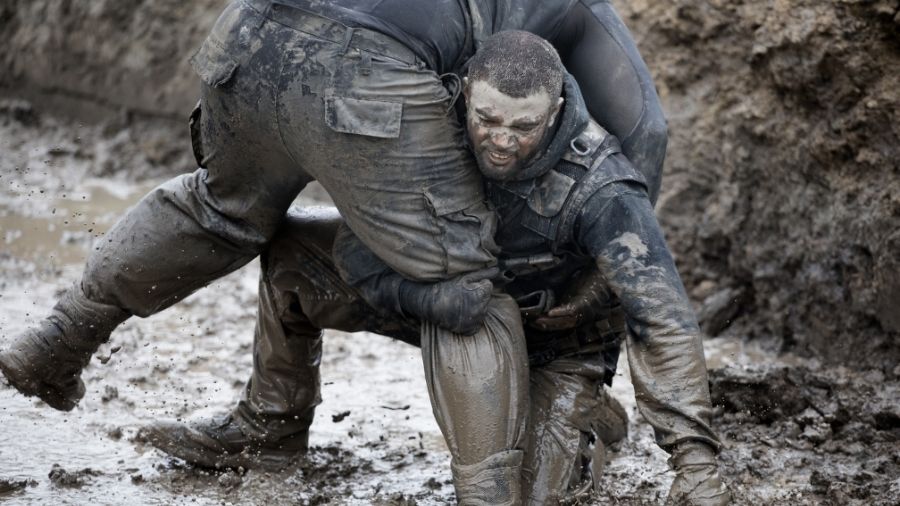
The style with the biggest claim to self-defense effectiveness is Krav Maga. A system created for the sole purpose of teaching soldiers and civilians to incapacitate an attacker as fast as possible.
Why Krav Maga is Good For Self Defense
Krav Maga was created for use by the Israeli military with lethal intentions. It’s fast, brutal, and effective.
The civilian version aims to keep the core principles but change the techniques to something usable in situations everyday people can fall into.
In Krav Maga, you learn basic striking, grappling, joint locks, defense against weapons, dirty techniques, and situational awareness, which, in theory, should be the best possible preparation for real-life self-defense.
Krav Maga is not a singular style; the training methodologies and techniques learned in different schools can differ vastly.
But Krav Maga can be great when the instructor is legitimate and wants to teach people how to fight.
Some schools practice sparring and drill-proven techniques against resistant partners. The one thing missing from combat sports is training in situations like multiple attackers, tight spaces, uncomfortable clothing, and countless other situations.
In the gyms where these scenarios are tested, Krav is perhaps the best system for self-defense.
Why Krav Maga is Bad For Self Defense
The idea of Krav Maga is the right one, but the execution rarely is. The schools I pointed to in the previous paragraph are 1 in 1000.
For the most part, Krav Maga practitioners do not spar. They drill against willing partners like in a demonstration, punch pads, and strike heavy bags. It’s something like crippled MMA training.
What’s worse is some instructors teach ridiculous techniques that will outright get you killed or badly hurt. Considering the overwhelming amount of real-life video footage, challenge matches, and even MMA, we know that you cannot fight without realistic training.
And there is very little footage of Krav Maga practitioners winning fights in any arena—real life or competition.
Most Krav Maga schools want to keep the customer flow rolling and prefer to keep things nice and easy, which is not a way to learn how to fight.
Even worse is the false sense of security many practitioners have without even once experiencing what it’s like to get punched or tackled to the ground.
Boxing
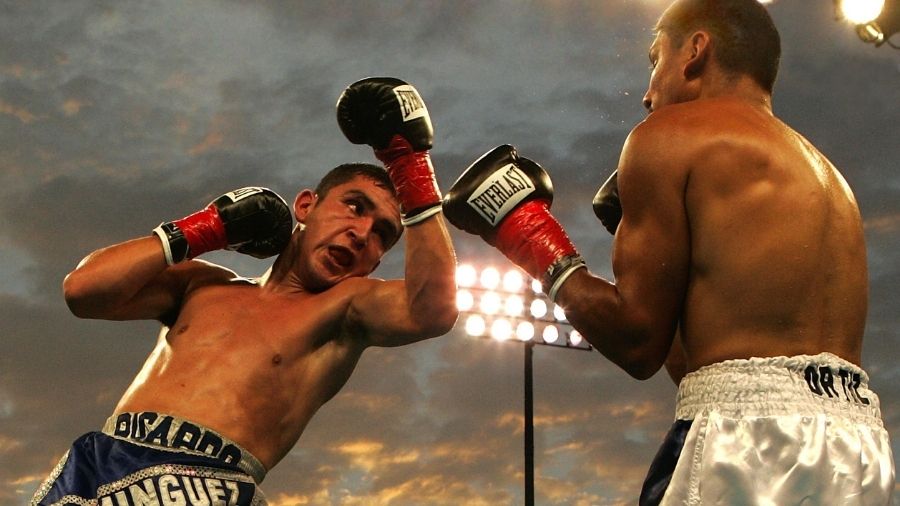
Boxing is one of the oldest and most widely practiced combat sports, and many rely on their boxing skills to help them in a real fight. Despite the lack of kicking and grappling, boxing is an excellent martial art for street fights.
And don’t make mistakes about boxing; there is a reason it is often called the “Sweet Science.”
Why Is Boxing Good For Self-Defense?
As a full-contact combat sport where knocking out the opponent is the primary goal, boxing has tremendous value for self-defense despite its limited arsenal of skills. Boxers are fierce, fast, and devastating with their hands.
Kicks have their place in a street fight, but punches are the fastest way to attack. Punching is not limited as much as kicking by tight clothing, slippery surfaces, tight spaces, and other common factors in real life.
Few ways are better to finish a fight than blasting someone with a quick punch combo, and there aren’t better punchers than boxers.
Why Boxing Is Bad For Self-Defense?
Obviously, boxing is very limited by its rules to only punching. This leaves kicking, clinch fighting, and grappling as uncharted territory for boxers where they can easily be bested.
Another drawback of boxing is it offers full violence as the only option to resolve a conflict, which is not always desirable.
Grappling arts give you the ability to incapacitate an attacker without hurting him, while boxing doesn’t.
BJJ
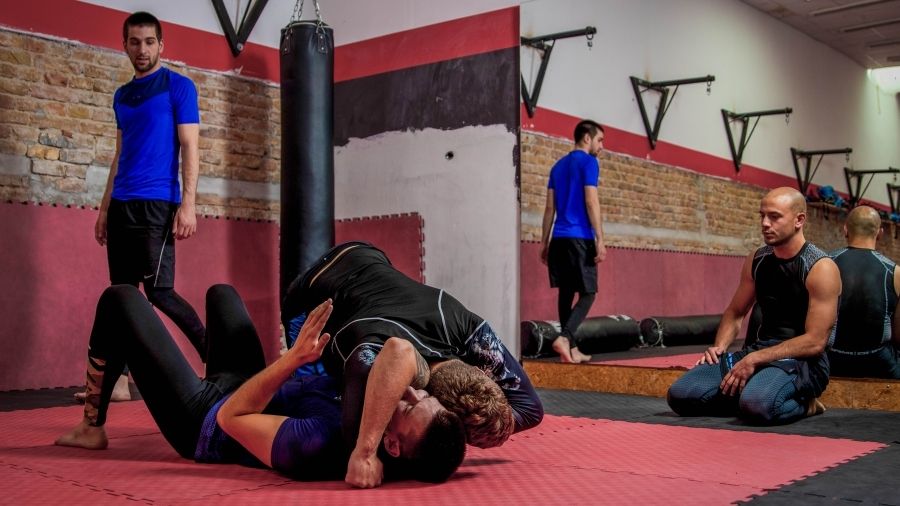
Brazilian Jiu-Jitsu is the fastest-growing martial art in terms of competition scene and number of practitioners. Its early success in MMA and the fact it was initially created for real fighting makes it a tempting choice for people who want to be able to defend themselves.
But is it as good as people claim it to be?
Why BJJ is Good For Self Defense
Jiu-jitsu was created as a fighting system, not a sport, and is intended to allow a smaller person to defeat a stronger one on the ground, where size matters less.
The techniques and principles of BJJ give an unsurmountable advantage over people with no knowledge of how to grapple.
I have to split BJJ into two categories: traditional BJJ and modern sports BJJ. In academies where you can still train in self-defense jiu-jitsu, the art is one of the best for that purpose.
When you put striking in the mix, learn how to defend against it, and use strikes to open up grappling opportunities, jiu-jitsu has proven effective in real life.
Another strong side of BJJ is incapacitating someone without severely hurting them. Many positions and submission holds are excellent ways of completely restraining someone, which is why BJJ is popular among law enforcement personnel.
Why BJJ is Bad For Self Defense
The most common and valid criticism of BJJ for self-defense is that it’s terrible against multiple opponents. Being on the ground is bad when other people can swoop in and stomp on you.
Furthermore, most people practicing BJJ today train in the grappling-only sports version, an amazing sport many of us love.
But it creates some extremely unrealistic habits that can be suicidal when striking is present. Even some MMA fighters in recent times have fallen into this trap and seem to forget they are in a fight and not a grappling match.
Muay Thai
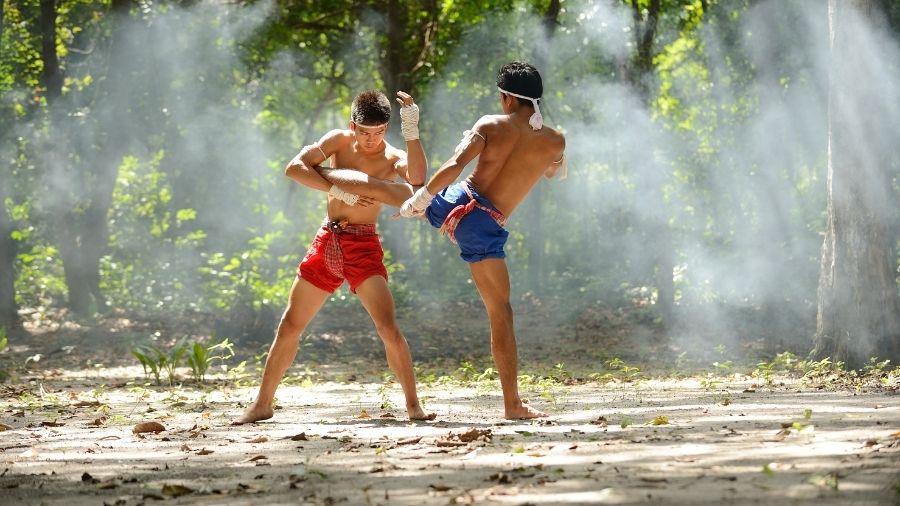
Muay Thai has transitioned from a combat sport limited to Thailand and its neighbors to one of the world’s most practiced striking styles. Much of this is due to MMA fighters’ success with the style, which is usually a premise for street fight effectiveness.
Why Muay Thai Good For Self Defense
As I’ve said many times, any full-contact combat sport where the forceful loss of consciousness of the opponent is a viable way to win is also solid as a self-defense tool. But Muay Thai is excellent because it has an extensive striking arsenal, including punches, kicks, elbows, and knees.
When I include the extensive clinch game in Muay Thai, the art becomes the most dangerous striking system, with options at every range.
Furthermore, culturally, Muay Thai encourages steadfastness and an ability to withstand large amounts of punishment, making even average-level practitioners hard individuals.
Another reason Muay Thai is excellent for real fights is that strikes are usually thrown to deal serious damage.
Both punches and kicks are devastating, and there aren’t many set-up strikes, which is a good habit for real life, where you don’t have five rounds to break an opponent down.
The clinch is especially important when considering self-defense because fights get up close and personal very often. Not only can Thai stylists strike from the clinch, but they are masters at throws and sweeps.
Why Muay Thai Bad For Self Defense
The one place Muay Thai lacks is ground fighting. Once a fight hits the ground, a Muay Thai practitioner is as helpless as any other striker against a competent grappler.
Judo
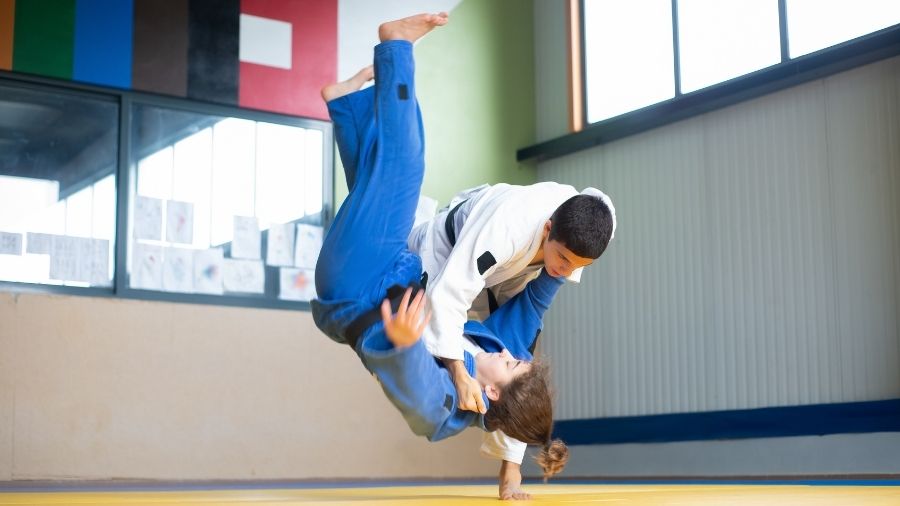
Judo is a martial art that focuses on powerful throws and ground fighting. Its techniques are among the best for self-defense, probably the best for fighting at close range.
Why Is Judo Good For Self-Defense?
Grappling skills are the best way to overcome significant differences, and Judo is a full-contact grappling martial art, automatically making it suitable for self-defense. I love the saying that a boxer can hit you with a heavy punch, but a judoka hits you with the earth.
Judokas are good at throwing, manipulating, and controlling someone on the feet or the ground.
Even with all the limitations implemented by the modern ruleset, which make it much more limited than BJJ, the submissions and throws are more than enough to handle the vast majority of the population.
Why Judo is Bad For Self Defense
Judo has a few negative sides when it comes to self-defense effectiveness. The most obvious one is the absence of striking, which is often the fastest solution to a fight.
Then there is the overreliance on the gi, which can be good or bad depending on where you live. If you are somewhere cold and people wear jackets, it’s a good thing, but if you are in a warm area where everyone is in a t-shirt, all your judo grips are gone.
Lethwei
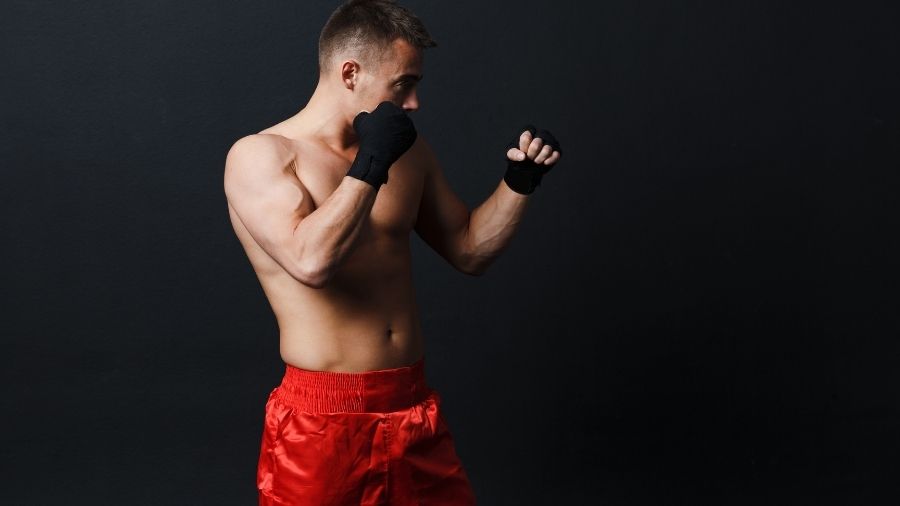
Lethwei is the most brutal striking art that is very similar to Muay Thai. These two arts share a lot in common, but Lethwei is less popular and far more brutal.
Its fighters compete bare-knuckle, which is why fights look violent and bloody. Still, the entire concept is close to ideal for self-defense, and here is why.
Why is Lethwei Good For Self-Defense?
Lethwei fighters use nine limbs as weapons to cause damage. They learn how to strike using kicks, punches, elbows, and knees. On top of that, it adds dirty moves like headbutts that are very brutal and dangerous.
If that’s not violent enough, fighters compete bare-knuckle and under the rules with no decision wins, just knockouts. How that’s good for self-defense, you may ask?
Well, street fights are not a pro match where there are rules and full padded boxing gloves. No, it is a chaotic brawl where no one can save you apart from yourself. It’s crucial to know how to punch bare-knuckle and not break your hand, which many people do.
And the same stands for absorbing these shots as it’s not the same when you receive a punch with and without the gloves.
Lethwei goes a step further in realism, which is why it is more brutal than other arts like boxing or Muay Thai. But at the same time, this is what makes you stronger and more capable on the streets.
Why Lethwei Is Bad For Self-Defense?
Lethwei doesn’t include any grappling apart from basic throws and trips. But the biggest downside is the fact that it is illegal in most countries outside of Myanmar, and it is not popular at all. If you live in the western world, it’s almost impossible to find a gym to train.
Combat Sambo
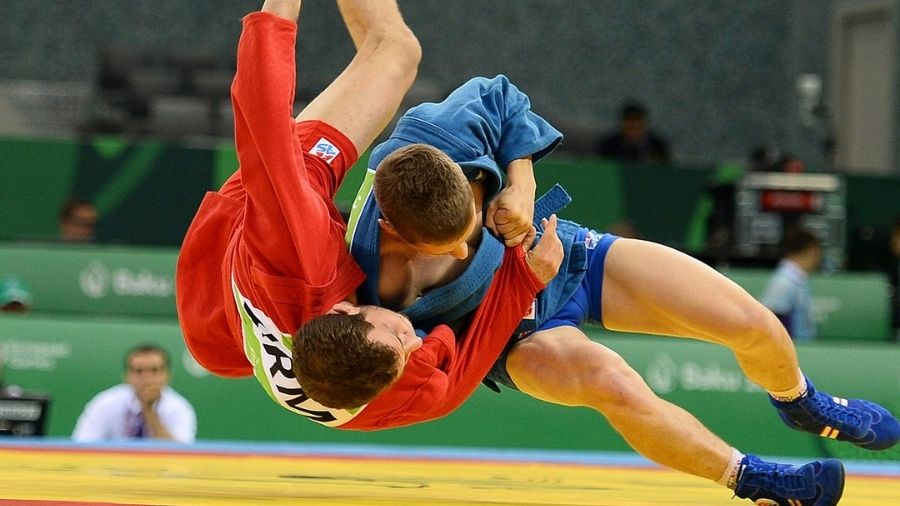
Combat Sambo is a martial art created by the Russian Military in the 1920s. It is a comprehensive combat system that covers all the aspects and elements of street fighting. In modern times, it is a very popular option among people who want to learn self-defense.
Why Is Sambo Good For Self-Defense?
Sambo has two forms: Sport Sambo and Combat Sambo. In this article, we will focus on the Combat version as it is more effective for self-defense.
In some way, Combat Sambo resembles modern MMA fighting. It consists of only the best grappling and striking techniques, and it covers both the grappling and standup aspects.
Students learn all types of wrestling and judo techniques and how to apply chokes and joint locks on the ground. When it comes to striking, it includes basic techniques from western boxing and Muay Thai.
Since the focus is on actual combat on the streets or battlefield, Sambo does not play around. It is an aggressive fighting system that trains you to hurt the attacker as much and as fast as possible.
Fighters trained in Sambo are explosive, tend to fight at a relentless pace, and constantly push for a finish.
What sets Sambo above the rest is its emphasis on dirty tactics and relentless pace. It teaches you to use soccer kicks, groin and throat strikes, and many other dirty moves. Though this may sound brutal, these moves can save your life on the streets.
What Are The Downsides Of Combat Sambo For Self-Defense?
Sambo is a comprehensive military combat system that doesn’t have any significant downsides. Still, the biggest one is the fact that it is not popular in the western world.
You might have a hard time finding a gym to train, and even if you find one, the quality of coaching staff might not be the same as in Russia.
Final Words
Self-defense and real fights have too many variables and are too unpredictable for a person to handle everything at all times.
The mental side and the specific moment are also crucial in the equation, and even the most prepared fighter can be surprised or badly hurt in an actual situation by someone with far fewer skills.
With that said, backed by the endless library of online video footage and my personal experience, I firmly believe that combat sports are better at preparing people for street fights than dedicated self-defense systems.
Despite the apparent drawbacks of having rules and significant gaps in available techniques in some styles, combat sports teach how to strike and grapple with a real resisting person trying to do the same thing to you.
A full power punch, kick, and joint lock feel the same in the gym and real life, and the system that teaches to do the most things is MMA.

